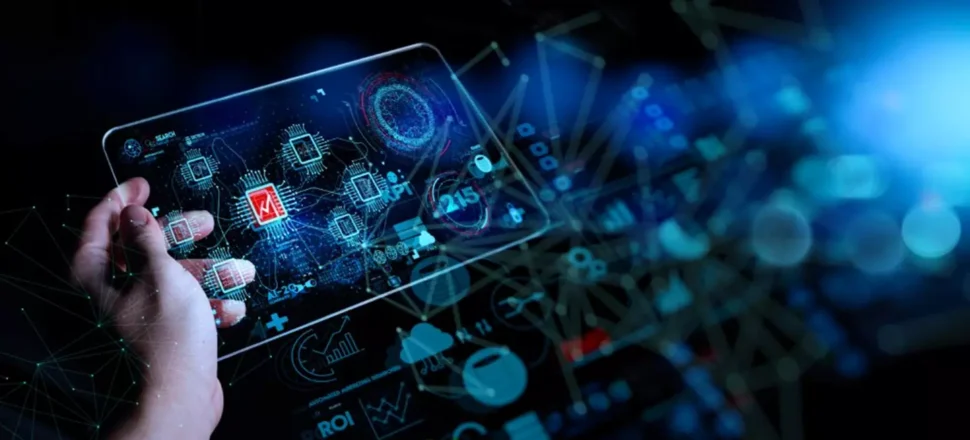Artificial Intelligence (AI) is rapidly growing in various industries, including HR. While AI technology offers numerous benefits, such as increased efficiency and reduced bias, it raises concerns about the lack of personal touch. In a recent LinkedIn Live event, Preet Boparai, Head of HR for India, at SABIC and Billy Elliott, Regional Director for APAC at Top Employers Institute, discussed the emerging use of AI in HR and the importance of maintaining a balance between AI and human expertise. The webinar explored examples of how AI has proven beneficial and the potential downsides of relying solely on technology. The session also provided insights into how SABIC India leverages AI while retaining the human element in HR operations. Here are some key learnings from the session:
Read ahead to get a snapshot of some of the session’s highlights; fill in the form to get the recording of the webinar to watch whenever you have a moment.
Balancing the Benefits and Concerns of AI in Human Resources: The Need for Human Oversight and Intervention
Using AI tools in HR has proven successful in saving time and effort. For example, AI tools have proven successful in recruitment by saving time and effort for recruiters and offering personalised feedback to candidates. These tools employ natural language processing and facial analysis technology to evaluate the fit of candidates for job positions. However, a critical issue with AI tools in recruitment is the potential for bias and discrimination. In a notable case, a recruitment tool demonstrated a preference for male candidates over female candidates. Therefore, it is necessary to have human oversight and intervention to ensure that algorithms are not giving biased results.
SABIC Shows How AI Tools Can Help HR in Employee Engagement and Retention
SABIC, a global leader in diversified chemicals, has harnessed the power of AI to enhance employee engagement and retention. Here are some ways they’ve implemented it:
- Development of a chatbot for employee experience: SABIC developed an advanced chatbot called Amber, which has proved invaluable during the pandemic. It acted as a seamless two-way communication tool, promoting connection and dialogue by regularly seeking feedback from SABIC employees about their experiences working in an evolving, flexible environment. The chatbot is used to identify disengaged employees and those who are at risk of leaving. By proactively identifying these employees, SABIC has been able to retain them, thereby reducing its attrition rate. However, SABIC also emphasised the importance of informing employees about the tool and ensuring that conversations between employees and HR are confidential.
- Gathering feedback from employees: SABIC has also used AI tools to gather employee feedback during the COVID-19 pandemic. This feedback was used to launch SABIC Care, a flexible employee health benefits plan.
- Personalised learning journeys: SABIC also uses Percipio, a platform that offers a range of courses and content for employees to upskill and reskill themselves. This platform uses AI to personalise the learning experience and improve the efficiency and effectiveness of the learning process.
Balancing AI and Human Intelligence
While AI tools can provide valuable insights and baseline information, SABIC emphasised the importance of involving human intelligence in decision-making. The solutions SABIC created were well thought through and catered to the entire organisation. SABIC also recognised that AI tools are not infallible and that there may be instances where the predictions made by these tools need to be corrected. Therefore, the company has created a feedback loop where human intelligence can correct and improve the accuracy of AI tools.
Fostering Collaboration Between AI and Humans in the Workplace: HR’s Vital Role
In today’s fast-paced, technologically driven world, it’s easy to get caught up in the idea that machines and algorithms can do everything better than humans. However, as we rely increasingly on artificial intelligence (AI) in the workplace, it’s essential to remember the value of the human touch. Recent studies have shown that many employees negatively perceive their HR departments. Some don’t even know who their HR representative is, while others don’t trust that any action will be taken if they report a concern, such as harassment or discrimination. With the increasing use of digital tools, this gap between HR and employees could widen further.
However, the solution isn’t to eliminate AI and go back to the days of paper forms and in-person meetings. Instead, HR departments need to remember that technology should be used to enhance and support human interaction, not replace it entirely. The key is to maintain honest and meaningful conversations with employees. This means closing the loop and letting employees know what actions are being taken in response to their concerns, even if the news isn’t always positive. No amount of technological advancement or process improvement can replace regular communication and connection between HR and employees.
Ultimately, the best approach is to view AI and humans as a united team working together to empower the future of the workplace. It’s up to us to take responsibility for making positive changes and not depend solely on technology to solve all our problems.
